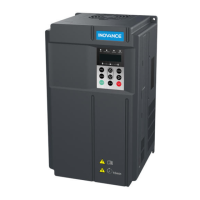MD280/MD280N User Manual Preface
I
Preface
Thank you for purchasing MD280 Series inverter.
This instruction manual describes how to use MD280 series inverter
properly. Please completely understanding this user’s manual before
installing, operating, and maintenance or inspecting.
Safety Precautions
The drawings presented in this instructions are sometimes shown
without covers or protective guards.Always replace the equipment’s
cover or protective guard as specified first,and the operate the
products in accordance with the instructions.
z The drawings presented in the instructions are typical examples
and may not match the product you received.
z These instructions are subject to change due to product
improvement, specification modification, specification modification.
z If you want to order the manual due to loss or damage, please
contact our company agents in each region or our company customer
service center directly.
z If there is still any problem during using the product, please
contact our company customer service center directly.
z Our Service Hotline: 400-777-1260.
efesotomasyon.com


